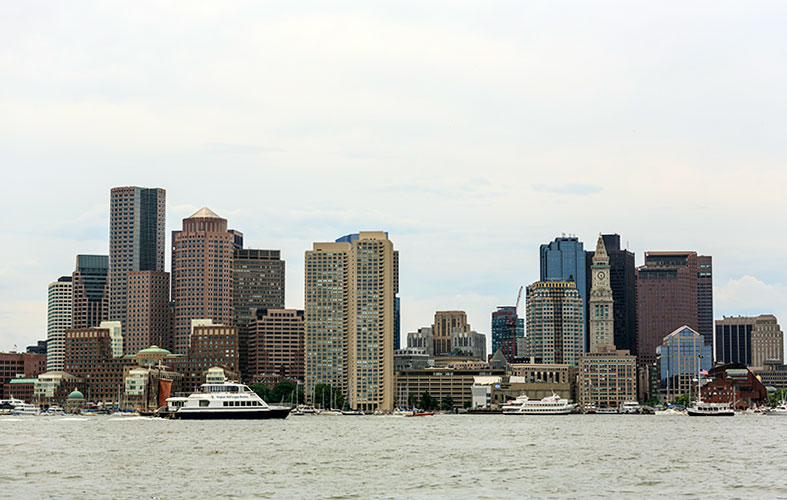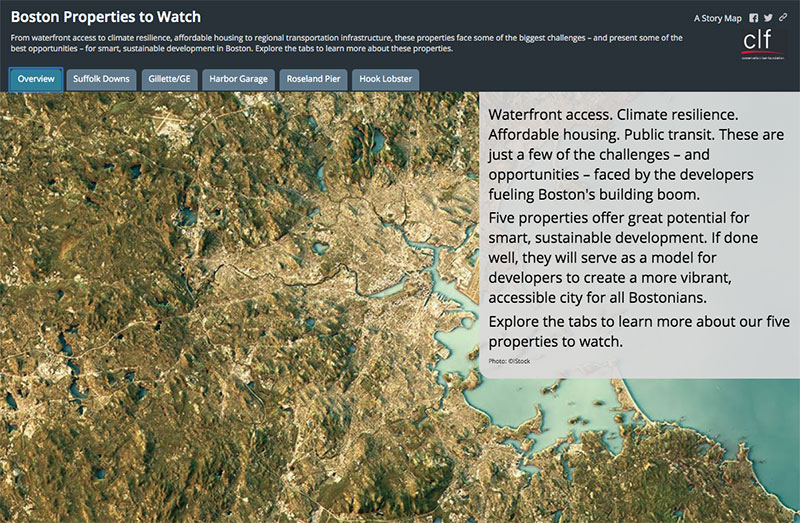
With developers looking beyond the Seaport for their next projects, Boston has an opportunity to protect public access to the waterfront and create more open space to help manage climate impacts. Photo: EcoPhotography
Boston’s waterfront has remained ever-evolving throughout the city’s nearly 400-year history. Once one of the dirtiest harbors in the country, in recent years the waterfront has become a magnet for new housing and business development. This is primarily due to the massive clean-up the state was forced to undertake on behalf of Commonwealth residents.
Boston Harbor today is a national jewel. But the success of its clean-up and redevelopment has brought new threats, especially when it comes to protecting the public’s legal right to access our waterfront areas. This is nowhere more evident than in the Seaport District. In recent years, private developers and their political allies have ignored the commitments required under the law, putting the waterfront at risk of becoming an exclusive enclave for the wealthy.
The good news is that, with Boston’s development boom continuing, opportunities exist to transform how we look at new projects. As developers look beyond the Seaport, we can both protect public access and create more open space, parks, and green space to help the region manage the impacts of climate change. And we can create more diverse neighborhoods with quality affordable housing, good transportation options, and amenities for all.
Find Out Which Projects Will Play A Role in Shaping Our Future
Understanding those threats and the opportunities is why CLF has put together a list of projects and properties that will play the most significant role in shaping Boston’s future. In looking at each, we strive to answer the question, “How could these sites prepare for climate change, help manage our housing and transportation crises, and enhance the public’s access to the water?”
The sites on the list include projects across Boston: Suffolk Downs, the Harbor Garage, Hook Wharf, Roseland Pier, and the Gillette site. For each, we have detailed both the challenges and the opportunities that the properties face, from housing to transportation, climate resilience to public access.
In particular, the redevelopment of Suffolk Downs presents a unique opportunity for the City of Boston to apply the lessons learned from the development of the Seaport District. The 161-acre former racetrack is in the early stages of a massive, 16.5 million square feet redevelopment, making it one of the largest projects in the Northeast. With East Boston and Revere each facing housing, climate, and transportation pressures – and Suffolk Downs on track to create nearly four times more housing than the Seaport – the project could model sustainable, transit-oriented development, affordable housing, public open space, climate resilience, and more.
Boston’s redevelopment boom is an opportunity for the city to finally get things right when it comes to protecting public rights and promoting construction that will not be overwhelmed by rising seas and more intense storms. Our leaders must learn from missteps in places like the Seaport and commit to climate-smart and equitable development from here on out. Transportation access and public open space can no longer be afterthoughts when it comes to good development.
Share Your Thoughts with Us
We invite you to take a few minutes to read CLF’s Properties to Watch. Please share your thoughts with us about these sites on our Facebook page and on Twitter. And, if you want to join us in our efforts to protect the People’s Harbor, please check out our toolkit and sign our pledge. Together, we can create a healthy, thriving waterfront – for all.




